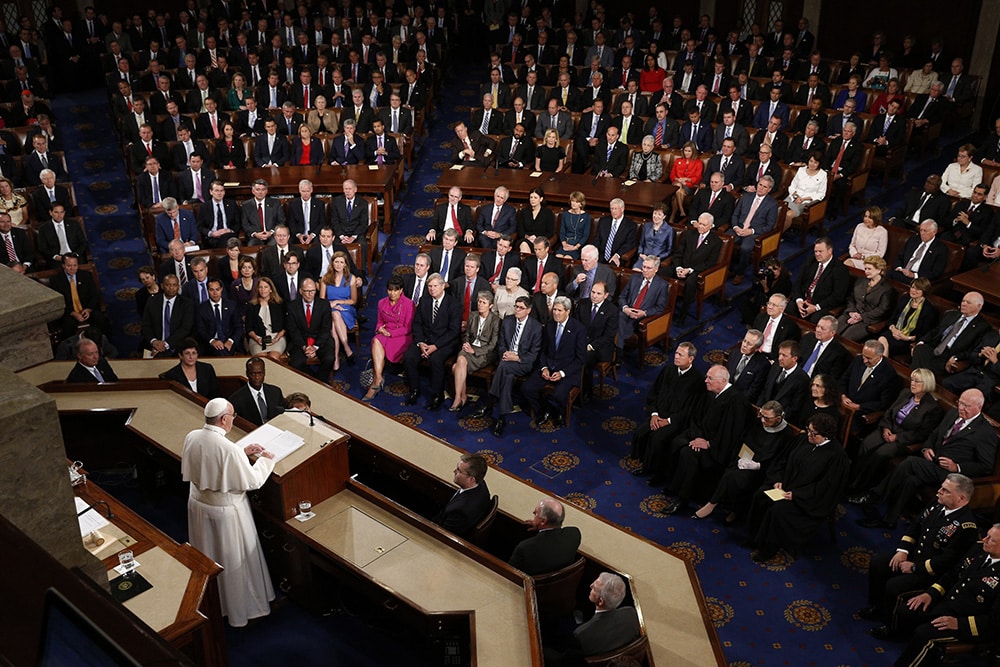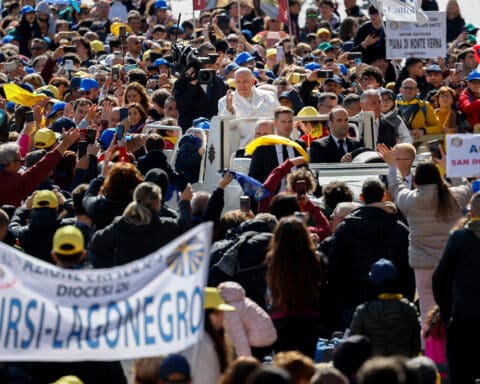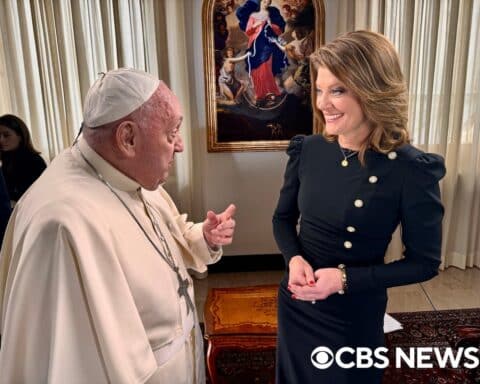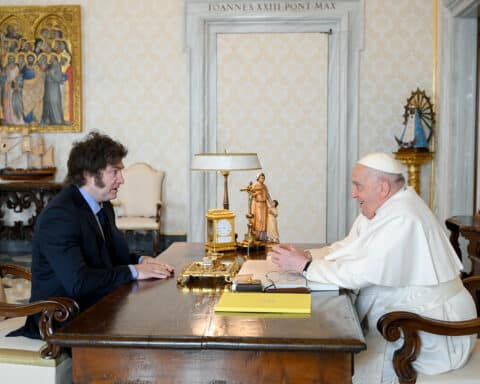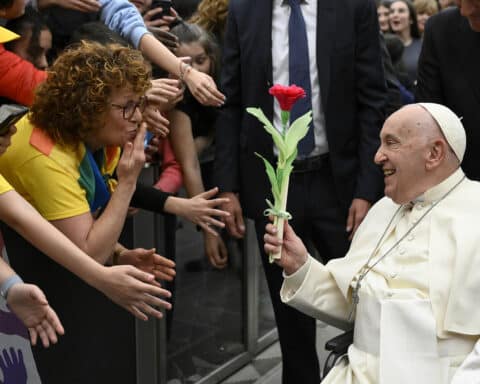On the fifth anniversary of the first and so far only visit by Pope Francis to the United States, maybe it’s time to ask this question: Did he come five years too soon?
The question is facetious, but it points to an important fact. During his September 2015 U.S. visit, Francis said things that, in the wake of recent and current happenings, look even more timely now than they did five years ago.
That is so, for instance, of the pope’s appeal to the Church in America to be a force for unity in a divided nation.
With protests and demonstrations erupting — sometimes violently — in cities across the country and election campaigning by bitterly divided parties and candidates in high gear, words spoken by Pope Francis to the U.S. bishops on Sept. 23, 2015, seem to come from a far distant time of happier, gentler days.
Related reading: 5 years later: Remembering Pope Francis’ visit to the United States
Speaking to the country’s bishops gathered in Washington, D.C., the pope said their task was “first and foremost to solidify unity.” And their service of unity, he added, “is particularly important for this nation.”
“It is an essential part of your mission,” the pope told the bishops, “to offer to the United States of America the humble yet powerful leaven of communion” while giving the world at large “a guarantee that its fate is not decay and dispersion.”
Unfortunately, dispersion — though not decay — now seems the fate of the American hierarchy thanks to the coronavirus. Having earlier canceled its spring general meeting in reaction to the pandemic, the U.S. Conference of Catholic Bishops announced late last month that its November meeting would take place virtually, without the bishops in physical attendance.
That lets USCCB transact necessary business while satisfying a bylaws requirement for an annual general assembly. But it denies the bishops a chance to practice what’s sometimes called “affective collegiality” — getting to know one another and interact — which is one of the most important purposes of these meetings.
This is why, confronting the realities of COVID-plagued 2020, the bishops can be pardoned if they join others in a nostalgic look back to the good old days of 2015 and the visit by the pope.
U.S. Catholicism since 2015
Despite planners’ anxieties and unusually heavy security, Francis’ Sept. 22-27 visit that year was universally judged a rousing success. Even the New York Times, a newspaper not usually known for being overly enthusiastic about things Catholic, reported that “throngs of Roman Catholics and non-Catholics … swooned over Francis.”
“The crowds have gone home. But a papal afterglow remains, injecting the American church with new energy,” the Times announced.
And Our Sunday Visitor, in its wrapup, called the visit “a tremendous success” marked by “huge, enthusiastic crowds, rapturous twitter postings, moving encounters with prison inmates, poor people and victims of clergy sex abuse, the pomp and circumstances of the White House, the U.S. Capitol and the U.N. General Assembly, and dramatic religious events,” including an outdoor Mass in Philadelphia that attracted hundreds of thousands of people.
But despite the enthusiasm at the time, the visit’s lasting effects — at least those that can be quantified and measured — were apparently few and far between, while long-term declines underway in a number of categories before the visit simply continued after the pope had left.
For example, according to the Center for Applied Research in the Apostolate, the rate of weekly Mass attendance by Catholics in the United States fell from 23.4% in 2015 to 21.1% last year. The number of priests dropped from 37,578 to 35,929, religious sisters from 48,546 to 42,441, infant baptisms from 693,914 to 582,331.The number of self-identified Catholics also went down, from 75.4 million five years ago to 72.4 million last year.
Legacy of St. Junipero Serra’s canonization
But one feature of the visit that definitely has lasted is the canonization by Pope Francis of St. Junipero Serra, the 18th-century Franciscan “Apostle of California.”
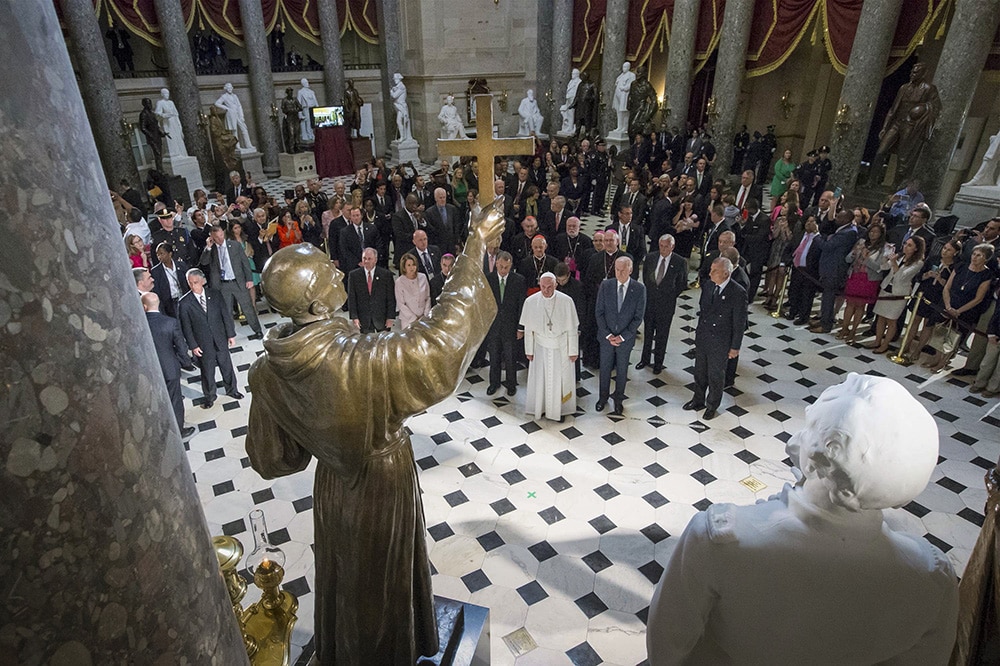
Even here, though, the change in mood that has swept the country since then is mirrored in the fact that St. Junipero Serra has been targeted for criticism by activists who denounce him for being an agent of Spanish colonialism and an oppressor of the Indians whom he sheltered at his California missions. Statues of the saint have been defaced by vandals acting out hostility toward what they imagine he stood for.
Pope Francis took a very different view of Father Serra when he declared him a saint. Speaking Sept. 23, 2015, at the Basilica of the National Shrine of the Immaculate Conception, Francis said: “He learned how to bring to birth and nurture God’s life in the faces of everyone he met; he made them his brothers and sisters. Junipero sought to defend the dignity of the native community, to protect it from those who had mistreated and abused it.”
Immigration was a topic for Pope Francis several times during the visit, and it remains a hotly contested election issue now. On Sept. 24, 2015, speaking to a joint session of Congress — the first time ever for a pope — Francis said the world was facing “a refugee crisis of a magnitude not seen since the Second World War.”
“On this continent, too,” he said, “thousands of persons are led to travel north in search of a better life for themselves and their loved ones, in search of greater opportunities. … If we want security, let us give security; if we want life, let us give life.”
Five years later, few if any of the problems that Francis spoke about in 2015 have been resolved. And scandals, outrages, violent protests and prolonged lockdown in response to a deadly pandemic have left nation and Church alike weary and more than a little on edge. Here, too, the pope’s words at the canonization of Junipero Serra still fit:
“Father Serra had a motto which inspired his life and work … siempre adelante! Keep moving forward! … Today, like him, may we be able to say: Forward! Let’s keep moving forward.”
Russell Shaw is a contributing editor for Our Sunday Visitor.

